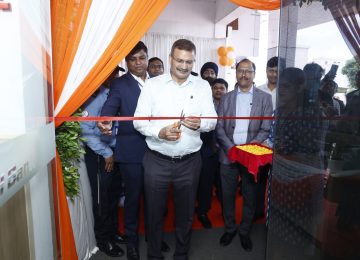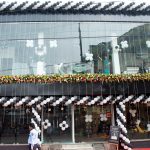Bhubaneswar: If one has travelled to the metropolitan cities of India, it is very likely to see impressive high-rises with exteriors that border architectural marvels. These exteriors are a work of extensive design and engineering, commonly referred to as façade. The primary function of a façade is to create a barrier that separates the interior of a building from the outside world while simultaneously adding aesthetic value to it. However, in recent times, they serve more purposes that are not limited to decorative.
The use of materials and facade treatments has increased significantly over the past ten years. The most recent application trend in India uses a variety of materials to clad buildings including glass, wood composite polymers, tiles, dry cladding systems, solar screens, aluminium, titanium, and zinc. These create integrated building systems that actively respond to their surroundings to produce comfortable interiors while also drastically lowering the building’s energy usage.
In residential façade systems, both aluminium and uPVC (unplasticised polyvinyl chloride) profiles can co-exist, and their use depends on one’s budget. While aluminium is the choice for long and tall systems, uPVC provides high-level noise insulation and thermal properties. Among higher-end residential aluminium products, most prominent are sliding window, tilt and turn window, ventilators, fixed window, villa window, and casement window. In higher-end residential uPVC products, casement windows, sliding windows, arch windows, special windows, and coloured windows offer architectural design with suitably placed colour handles and other hardware.
A bright and contemporary façade requires a lot of thought and engineering, from design to material selection to contractor selection and installation. Additionally, a well-structured facade will maximise natural light and ventilation in the building. The sturdiness and toughness that façades provide to a structure is another advantage that endures strong winds and rain. One of the primary advantages of building façades is the potential reduction in noise pollution by creating a sturdy barrier – this is one of the reasons why more residential buildings are pivoting to the use of façade.
With technological innovations taking place more frequently, the development of energy-saving façade material has taken birth as these advanced products are powerful solar energy absorbers. Hence, they find widespread adoption by many commercial and residential buildings as a backup source of electricity generation. Moreover, façade engineers design the façade elements in Building Information Modelling (BIM) to analyse the physical and functional building structure using finite element analysis (FEA) and simulation. By keeping these technologies and development at the forefront, in addition to the requirement of more sustainable buildings, the façade segment is slated to observe increased interest from bigger commercial projects as well as small and independent home owners.











